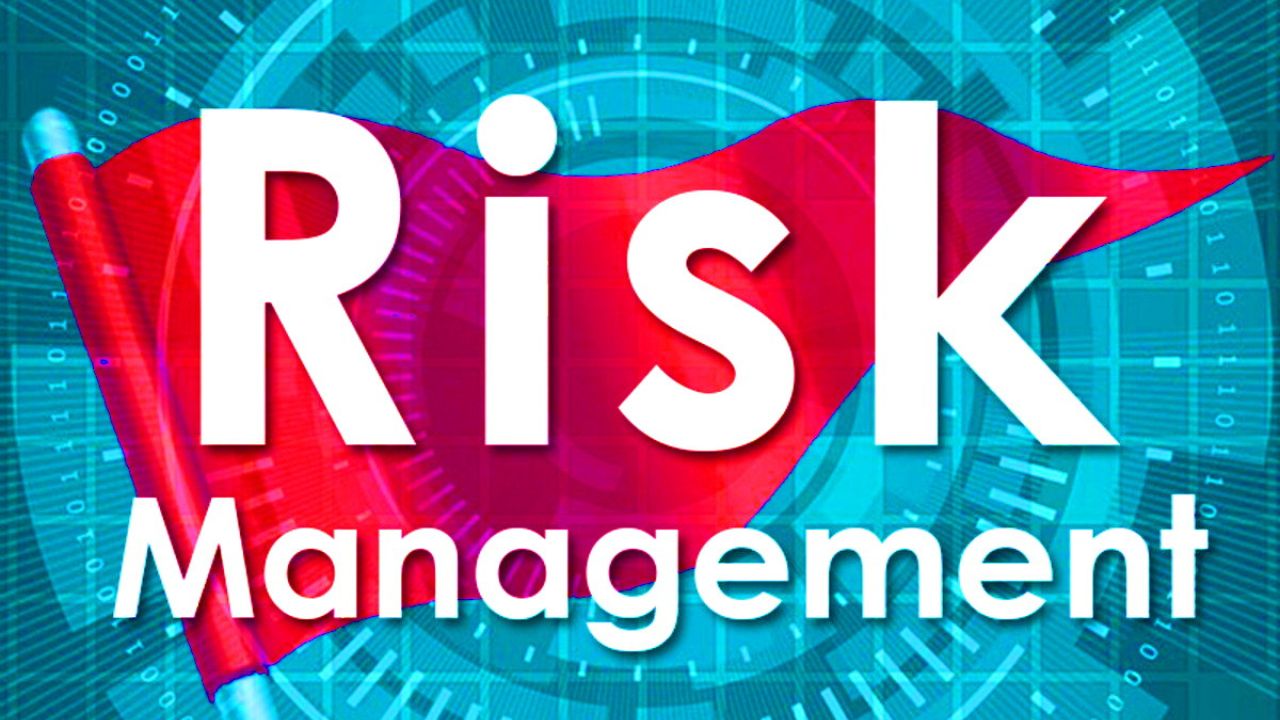
Do you know how many organizations these days are adopting Agile methodologies to enhance their project management practices? Many, and the number is increasing every day. Why?
Agile is a flexible and iterative approach that emphasizes collaboration, customer satisfaction, and adaptability. However, despite its many benefits, Agile projects are not immune to risks. Effective risk management is crucial for ensuring the success of Agile projects.
Risk management in Agile involves identifying, assessing, and mitigating potential risks throughout the project lifecycle. This proactive approach helps teams anticipate challenges, make informed decisions, and maintain focus on delivering high-quality products. By integrating risk management into Agile practices, organizations can foster a culture of continuous improvement and resilience.
This article delves into the intricacies of risk management within the Agile framework, providing insights, strategies, and best practices to help teams navigate uncertainties successfully. Whether you're new to Agile or an experienced practitioner, this guide will equip you with the knowledge needed to manage risks effectively and ensure the successful completion of your projects.
Understanding Risk Management in Agile
What is Risk Management?
Risk management is the process of identifying, analyzing, and addressing potential risks that could impact a project's objectives. In the context of Agile, risk management involves proactively identifying and addressing uncertainties that may arise during the iterative development process. The goal is to minimize negative impacts and maximize opportunities for success.
Key Components of Risk Management in Agile
- Risk Identification: Identifying potential risks that could affect the project. This includes both internal and external factors.
- Risk Assessment involves evaluating the likelihood and impact of identified risks. This step helps prioritize risks based on their potential impact on the project.
- Risk Mitigation: Developing and implementing strategies to reduce the likelihood or impact of risks. This may involve adjusting project plans, reallocating resources, or taking preventive actions.
- Risk Monitoring and Control: Continuously monitoring risks throughout the project lifecycle and adjusting mitigation strategies as necessary. This ensures that risks are managed effectively and that the project stays on track.
Importance of Risk Management in Agile
Effective risk management in Agile is essential for several reasons:
- Ensures Project Success: By proactively addressing potential risks, teams can minimize disruptions and ensure the successful completion of projects.
- Enhances Decision-Making: Risk management provides valuable information that can inform strategic decisions, helping teams make more informed choices.
- Fosters Collaboration: Involving stakeholders in the risk management process encourages open communication and collaboration, strengthening team dynamics.
- Promotes Adaptability: Agile's iterative nature allows teams to adjust their approaches based on evolving risks, ensuring flexibility and responsiveness.
Integrating Risk Management into Agile Practices
Incorporating Risk Management into Scrum Frameworks
Scrum is one of the most popular Agile frameworks, characterized by its use of sprints—short, time-boxed iterations that typically last two to four weeks. Integrating risk management into Scrum involves several key steps:
- Sprint Planning: During sprint planning, the product owner and development team collaborate to identify potential risks associated with upcoming user stories or features. These risks are then documented and prioritized.
- Daily SCRUMs: In daily stand-up meetings, team members discuss any emerging risks or issues that may impact the current sprint. This allows for early detection and timely intervention.
- Sprint Reviews and Retrospectives: At the end of each sprint, the team reviews completed work and reflects on what went well and what could be improved. This is an ideal opportunity to assess risk management efforts and identify areas for enhancement.
- Risk Register: Maintaining a centralized risk register helps track identified risks, their status, and any actions taken. This ensures transparency and accountability throughout the project.
Applying Risk Management in Kanban Systems
Kanban is another Agile framework that focuses on visualizing workflow and limiting work-in-progress (WIP) to improve efficiency. Risk management in Kanban involves continuous monitoring and adjustment:
- Visualize Risks: Use Kanban boards to visualize potential risks alongside tasks. This provides a clear view of risks and their progress, facilitating timely action.
- Limit WIP: By limiting WIP, teams can focus on completing tasks before moving on to new ones. This reduces the likelihood of accumulating unresolved risks.
- Continuous Improvement: Review and refine risk management processes regularly to ensure they remain effective. This includes updating the risk register and incorporating lessons learned from previous sprints.
- Feedback Loops: Establish feedback loops to gather input from stakeholders and team members about emerging risks. This fosters a culture of continuous learning and adaptation.
Leveraging Lean Principles for Risk Management
Lean principles emphasize waste reduction, value delivery, and continuous improvement. Applying these principles to risk management in Agile can yield significant benefits:
- Value Stream Mapping: Identify and map out the value streams within your project. This helps pinpoint areas where risks are likely to occur and enables targeted risk management efforts.
- Kaizen Events: Conduct Kaizen events to address specific risks or challenges. These focused sessions encourage collaboration and innovation, leading to more effective risk mitigation strategies.
- Poka-Yoke: Implement poka-yoke techniques to prevent errors and minimize risks. This can include checklists, automated tools, or other safeguards that help avoid common pitfalls.
- Muda Elimination: Continuously seek opportunities to eliminate muda (waste) in your processes. Reducing unnecessary activities can free up resources for more effective risk management.
Techniques and Tools for Effective Risk Management in Agile
Common Risk Management Techniques in Agile
Several techniques are commonly used in Agile to manage risks effectively:
- SWOT Analysis: Conducting a SWOT analysis (Strengths, Weaknesses, Opportunities, Threats) helps teams identify internal and external factors that could impact the project. This provides a comprehensive view of potential risks and opportunities.
- Fishbone Diagram (Ishikawa Diagram): Also known as a cause-and-effect diagram, this technique helps teams visualize the root causes of potential risks. By breaking down complex issues into smaller components, teams can better understand and address underlying problems.
- Monte Carlo Simulation: This probabilistic simulation technique estimates the likelihood of various outcomes based on different scenarios. It helps teams assess the impact of uncertainties and make more informed decisions.
- Risk Breakdown Structure (RBS): An RBS is a hierarchical chart that breaks down risks into categories and subcategories. This structure helps organize and prioritize risks, making it easier to manage them effectively.
- Root Cause Analysis (RCA): RCA is a method used to identify the underlying causes of risks or issues. By addressing the root causes rather than just the symptoms, teams can implement more effective and sustainable solutions.
Tools for Managing Risks in Agile Projects
Various tools can assist teams in managing risks more efficiently:
- JIRA: JIRA is a widely-used project management tool that supports Agile practices. Its risk management plugin allows teams to create and track risk registers, assign owners, and monitor progress.
- Trello: Trello's card-based system makes it easy to visualize and manage risks. Teams can use custom fields to track risk details, assign priorities, and set deadlines.
- Risk Management Software: Specialized risk management software like RiskyProject or Clarity provides advanced features for risk identification, assessment, and mitigation. These tools offer comprehensive dashboards and reporting capabilities.
- Spreadsheets: For smaller projects or teams, spreadsheets can be an effective tool for tracking risks. Templates like the Risk Matrix or Fishbone Diagram can be easily created using Excel or Google Sheets.
- Mind Mapping Tools: Tools like MindMeister or XMind allow teams to visually represent risks and their interrelationships. This can aid in brainstorming and collaborative risk management efforts.
Best Practices for Effective Risk Management in Agile
Establishing a Culture of Risk Awareness
Creating a culture of risk awareness is fundamental to effective risk management in Agile. Encourage open communication and transparency among team members and stakeholders. Regularly discuss potential risks during meetings and foster a mindset of continuous improvement. By promoting a proactive approach to risk management, teams can build resilience and adaptability.
Continuous Monitoring and Adjustment
Risk management is an ongoing process that requires continuous monitoring and adjustment. Regularly review and update the risk register to reflect new information and changing circumstances. Incorporate feedback from stakeholders and team members to refine risk management strategies. Stay agile and responsive to emerging risks, ensuring that mitigation efforts remain relevant and effective.
Involving Stakeholders in Risk Management
Stakeholder involvement is crucial for successful risk management in Agile. Engage stakeholders early in the process to gain their insights and perspectives. Keep them informed about identified risks and mitigation strategies. Collaborate with stakeholders to develop contingency plans and ensure alignment on risk management goals. Their active participation can lead to more robust and effective risk management practices.
Prioritizing Risks Based on Impact and Likelihood
Prioritizing risks based on their potential impact and likelihood is essential for efficient risk management. Use a risk matrix or similar tool to categorize risks according to their severity. Focus on high-impact, high-likelihood risks first, while also addressing lower-priority risks as resources allow. This approach ensures that critical risks receive adequate attention and mitigation efforts.
Case Studies: Successful Risk Management in Agile Projects
Case Study 1: A Healthcare Startup
This case study highlights how the startup’s strategic approach to risk management not only facilitated compliance with regulatory standards but also ensured a user-centric design that resonated with its target audience. The successful launch of the app, coupled with positive user feedback, underscores the value of integrating risk management into Agile practices, particularly in high-stakes environments like healthcare. This example serves as a valuable lesson for organizations seeking to balance innovation with risk mitigation in their Agile projects.
A healthcare startup was developing a mobile app for patients to manage their medication schedules. Early in the project, the team identified several risks, including potential regulatory challenges and user adoption hurdles. They incorporated risk management into their Agile practices by:
- Conduct regular risk assessments during sprint planning and retrospectives.
- Using a risk matrix to prioritize risks and allocate resources accordingly.
- Engaging stakeholders, including regulatory experts and potential users, to provide valuable insights.
- Implementing contingency plans for high-priority risks, such as partnering with legal advisors to navigate regulatory complexities.
The result was a successful launch of the app, coupled with positive user feedback, underscores the value of integrating risk management into Agile practices, particularly in high-stakes environments like healthcare. This example serves as a valuable lesson for organizations seeking to balance innovation with risk mitigation in their Agile projects.
Case Study 2: A Financial Services Company
This case study examines how a financial services company successfully navigated the complexities of upgrading its core banking system using Agile methodologies, while effectively addressing significant risks such as data migration issues and integration challenges.
A financial services company was upgrading its core banking system using Agile methodologies. They faced numerous risks, including data migration issues and integration challenges. To manage these risks effectively, they:
- Established a dedicated risk management team responsible for identifying and addressing potential risks.
- Utilized a risk breakdown structure to categorize and prioritize risks.
- Conducted regular risk reviews and adjusted mitigation strategies as needed.
- Fostered a culture of continuous improvement by encouraging open communication and collaboration.
The project was completed on time and within budget, with minimal disruptions to operations. The upgraded system enhanced customer experience and improved operational efficiency.
The result was a seamless upgrade completed on time and within budget, with minimal disruption to operations. The new system not only enhanced the customer experience but also significantly improved operational efficiency. This case study demonstrates how integrating robust risk management practices into Agile methodologies can drive successful outcomes, even in highly complex and mission-critical projects. It serves as a valuable example for organizations in regulated industries seeking to balance innovation with risk mitigation in their Agile transformations.
Case Study 3: A Technology Firm
This case study explores how a technology firm leveraged Agile methodologies to develop a new cloud-based platform for businesses, while effectively addressing significant risks such as security vulnerabilities and scalability concerns.
A technology firm was developing a new cloud-based platform for businesses. They encountered several risks, including security vulnerabilities and scalability concerns. To mitigate these risks, they:
- Implemented a comprehensive risk management plan that included regular security audits and performance testing.
- Used a fishbone diagram to identify and address root causes of potential risks.
- Incorporated feedback from beta testers to refine the platform and address usability issues.
- Developed contingency plans for high-priority risks, such as having backup systems in place for data migration.
The platform launched successfully, receiving positive reviews from customers and demonstrating strong scalability and security features.
The result was a successful platform launch that garnered positive reviews from customers, with particular praise for its scalability and security features. This case study highlights how integrating proactive risk management practices into Agile development can lead to the delivery of high-quality, customer-centric solutions. It serves as an inspiring example for technology firms aiming to balance innovation with risk mitigation in their Agile projects.
Conclusion
Risk management is an integral part of Agile project management, enabling teams to navigate uncertainties and deliver successful outcomes. By understanding the importance of risk management, integrating it into Agile practices, and leveraging appropriate techniques and tools, organizations can foster a culture of resilience and continuous improvement. Embracing risk management in Agile ensures that teams are well-prepared to face challenges head-on, ultimately leading to more robust and successful projects.
As the Agile landscape continues to evolve, staying informed about best practices and innovative approaches to risk management will be crucial for maintaining competitiveness and delivering value to stakeholders. By continuously refining and enhancing risk management strategies, teams can ensure the longevity and success of their Agile projects.
CLICK HERE TO Join 1,000+ Successful Graduates Who Now:
- Save $127,000 per project on average
- Complete 95% of Sprints On-Time
- Reduce Risk-Related Delays by 72%
- Save an Average of 12 Hours Per Week on Risk Management







